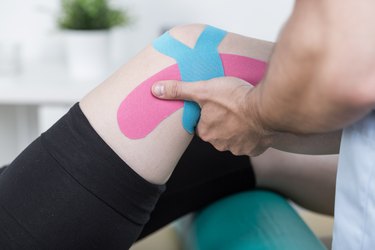Check out the Rehabilitation for twisted and sprained knee injuries Knee sprains can happen when playing sports or as a result of trauma like a fall. The ligaments that keep your bones together are harmed by sprains. Your knee’s articular cartilage, which acts as a cushion between the bones, can also become damaged.
Treatments to lessen discomfort, manual therapy, range-of-motion exercises, and strengthening are all included in knee sprain recovery. If you have a knee sprain, adhere to the precise recommendations given to you by your physical therapist or physician.
Rehabilitation For Twisted And Sprained Knee Injuries
Initial Knee Sprain Rehab
The primary goal of initial rehab for a knee injury is to reduce pain and inflammation while enhancing blood flow to aid in recovery. Ice is frequently applied to reduce pain, swelling, and muscular spasms. Heat can be applied to your knee before exercise to improve blood flow and reduce stiffness once the edema has subsided.
Treatments using ultrasound and electrical stimulation also lessen discomfort and improve blood flow to your knee. Additionally, as part of knee sprain rehabilitation, neuromuscular electrical stimulation an electrical current strong enough to elicit a muscle contraction can be used in conjunction with exercise to assist strengthen your thigh muscles.
Physical Therapy: Manual Techniques
Physical therapy for a sprained knee should include manual therapy or hands-on care. To reduce stiffness and increase flexibility, your therapist could bend and straighten your knee as well as reposition your kneecap. Additionally, several massage techniques may be performed.
Knee swelling can be reduced with retrograde massage strokes applied from your lower leg to your thigh. Deep tissue massage or forceful pressure done with strokes in many directions can help cure muscle spasms and tightness.
To improve blood flow to a damaged ligament, cross-friction massage can be applied directly to the region. The ligament is massaged by first applying firm pressure and then moving side to side.
Range-of-Motion Exercises
In order to alleviate stiffness following your knee sprain, range-of-motion exercises frequently begin in your first rehabilitation session. Enhancing bending and straightening is the aim. After an injury, full range of motion should be achieved in two to four weeks.
You might first need help to move the knee on your own. Sit with your legs straight out in front of you to promote knee bending. Your foot’s ball should be covered with a towel. Pull the cloth toward you to help with the motion as you try to bend your knee.
Build Your Strength
Once your knee can move fully without pain, you can usually start doing strengthening activities. To ease the strain on your leg, you can begin by performing these exercises while seated or lying down. As you get stronger, you can wear ankle weights while performing these exercises to enhance your resistance.
You can incorporate stationary cycling and elliptical training to improve your endurance. Usually six to eight weeks following an accident, rehabilitation may also include balance exercises like standing on one foot and sports-specific training.




